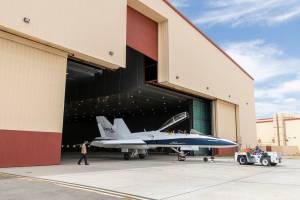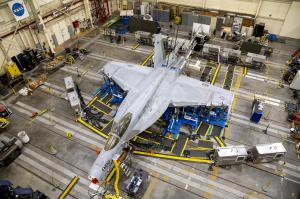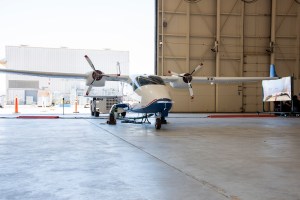NASA is developing a new flight data archiving and acquisition system that will help engineers record, access, process, and analyze the vast amount of data expected after each flight of the X-59 aircraft – the centerpiece of the Quesst mission,
The X-59 is now in its final stages of assembly and checkout at Lockheed Martin’s Skunk Works facility in Palmdale, California, with the key focus towards achieving first flight. Once it takes to the sky it will be flown to verify all systems are healthy and safe for flight. This stage of the project is referred to as the flight envelope expansion phase.
The flight envelope expansion testing will require engineers to monitor the aircraft systems in real-time as the X-59 reaches supersonic speeds and completes specific flight-testing maneuvers.
The X-59 is instrumented with numerous sensors monitoring the health and performance of the airplane. This data is telemetered to the ground for real-time monitoring by engineers in the control room and archived for future analysis.
The new Aeronautics Research Mission Directorate Flight Data Portal (AFDP) will provide a secure data archiving and user-friendly interface for working with that data post flight.
When fully ready AFDP will replace the Flight Data Archive System, which was created at NASA’s Armstrong Flight Research Center in California during the early 1980’s.
That older system is now basically obsolete and does not readily support the geographically distributed nature of flight research teams today. AFDP, seeks to expand on the original capabilities and make them available across NASA’s field centers.
Phase 1 of AFDP’s development – which enables a “limited initial operating capability” in support of the X-59 envelope expansion flight testing – was completed in June. Once all developmental phases are complete, the AFDP system will replace the previous capability and include several new features:
- Web-based access from Armstrong, Ames Research Center in California, Glenn Research Center in Cleveland, and Langley Research Center in Virginia – including anyone who can remotely access the NASA network through one of those centers.
- Hierarchical Data Format 5 (HDF5) flight data file format will be supported. HDF5 files are “self-describing” data files that include the critical metadata associated with the flight data.
- Both the Armstrong Dryden Aeronautical Test Range and the Armstrong Simulation Lab will be storing data in AFDP, and the Armstrong Flight Loads Laboratory test data capability will be added in the near future.
- The ability for a researcher to select specific parameters and time slices to be extracted into a downloadable file, which includes the metadata from all source data files.
- The ability for a researcher to use search capabilities driven by the metadata.
- Secure access to the system is ensured, and access is based on project requirements and restrictions for individual parameters, all of which are in accordance with NASA’s IT security protocols.
The AFDP servers and storage hardware are now in place in the Armstrong IT data center, and the AFDP team is currently working to improve the system beyond their Phase 1 project milestone.
Throughout their development in Phase 1, the AFDP team trailblazed an agile system engineering process, and they are continuing to use this process to carefully track all improvements beyond Phase 1 in accordance with all AFDP system stakeholders.
Daniel S. Jones
Armstrong Flight Research Center

































